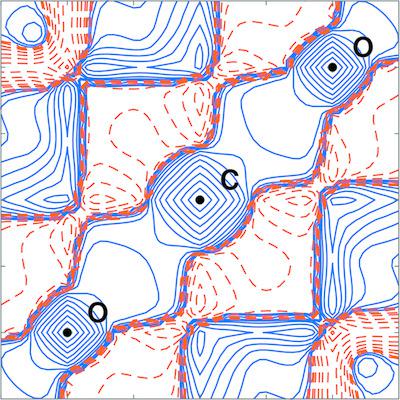当前位置:
X-MOL 学术
›
Acta Crystallogr. A Found. Adv.
›
论文详情
Our official English website, www.x-mol.net, welcomes your
feedback! (Note: you will need to create a separate account there.)
Inferring the one-electron reduced density matrix of molecular crystals from experimental data sets through semidefinite programming.
Acta Crystallographica Section A: Foundations and Advances ( IF 1.9 ) Pub Date : 2020-01-01 , DOI: 10.1107/s2053273319015870 Benjamin De Bruyne 1 , Jean Michel Gillet 2
Acta Crystallographica Section A: Foundations and Advances ( IF 1.9 ) Pub Date : 2020-01-01 , DOI: 10.1107/s2053273319015870 Benjamin De Bruyne 1 , Jean Michel Gillet 2
Affiliation

|
Constructing a quantum description of crystals from scattering experiments is of great significance to explain their macroscopic properties and to evaluate the pertinence of theoretical ab initio models. While reconstruction methods of the one-electron reduced density matrix have already been proposed, they are usually tied to strong assumptions that limit and may introduce bias in the model. The goal of this paper is to infer a one-electron reduced density matrix (1-RDM) with minimal assumptions. It has been found that the mathematical framework of semidefinite programming can achieve this goal. Additionally, it conveniently addresses the nontrivial constraints on the 1-RDM which were major hindrances for the existing models. The framework established in this work can be used as a reference to interpret experimental results. This method has been applied to the crystal of dry ice and provides very satisfactory results when compared with periodic ab initio calculations.
中文翻译:

通过半确定编程,从实验数据集中推断分子晶体的单电子降密度矩阵。
通过散射实验构建晶体的量子描述对于解释其宏观性质和评估理论从头算模型的相关性具有重要意义。虽然已经提出了一种单电子降密度矩阵的重建方法,但它们通常与限制并可能在模型中引入偏差的强大假设联系在一起。本文的目的是在最小假设的情况下推断出一个单电子密度降低矩阵(1-RDM)。已经发现,半定规划的数学框架可以实现这一目标。此外,它方便地解决了1-RDM的非平凡约束,这是现有模型的主要障碍。在这项工作中建立的框架可以用作解释实验结果的参考。
更新日期:2020-01-07
中文翻译:

通过半确定编程,从实验数据集中推断分子晶体的单电子降密度矩阵。
通过散射实验构建晶体的量子描述对于解释其宏观性质和评估理论从头算模型的相关性具有重要意义。虽然已经提出了一种单电子降密度矩阵的重建方法,但它们通常与限制并可能在模型中引入偏差的强大假设联系在一起。本文的目的是在最小假设的情况下推断出一个单电子密度降低矩阵(1-RDM)。已经发现,半定规划的数学框架可以实现这一目标。此外,它方便地解决了1-RDM的非平凡约束,这是现有模型的主要障碍。在这项工作中建立的框架可以用作解释实验结果的参考。











































 京公网安备 11010802027423号
京公网安备 11010802027423号